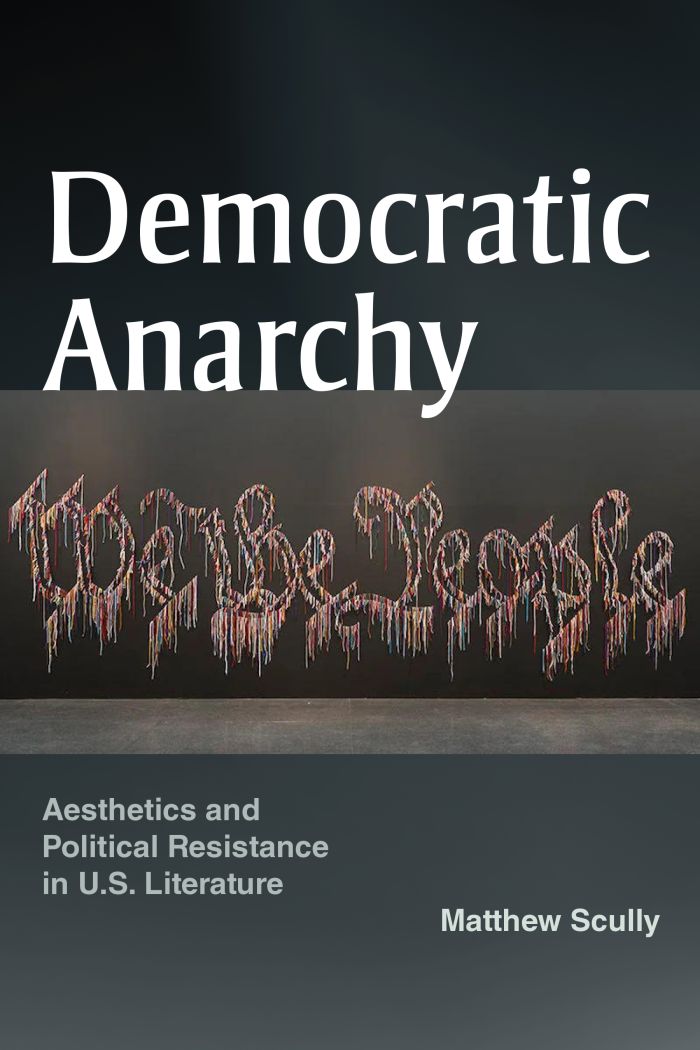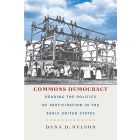Democratic Anarchy
Aesthetics and Political Resistance in U.S. Literature

This book can be opened with

A dramatic and necessary rethinking of the meaning of Democracy
Democratic Anarchy grapples with an uncomfortable but obvious truth inimical to democracy: both aesthetics and politics depend on the structuring antagonism of inclusion and exclusion. Yet in Democratic Anarchy, Matthew Scully asks, how can “the people” be represented in a way that acknowledges what remains unrepresentable? What would it mean to face up to the constitutive exclusions that haunt U.S. democracy and its anxious fantasies of equality?
Synthesizing a broad range of theoretical traditions and interlocutors—including Lacan, Rancière, Edelman, and Hartman—Democratic Anarchy polemically declares that there has never been, nor can there ever be, a realized democracy in the U.S. because democracy always depends on the hierarchical institution of a formal order by one part of the population over another. Engaging with an expansive corpus of American literature and art (Harriet Jacobs, Nathaniel Hawthorne, Louis Zukofsky, Thomas Pynchon, Toni Morrison, Theresa Hak Kyung Cha, Nari Ward, Ocean Vuong, and Safiya Sinclair), Democratic Anarchy argues that many liberal concepts and institutions are in fact structurally opposed to democratic equality because they depend on regulating what can appear and in what form.
By focusing on works that disrupt this regulatory impulse, Scully shows how rhetorical strategies of interruption, excess, and disorder figure the anarchic equality that inegalitarian fantasies of democracy disavow. Democratic Anarchy develops a rigorous theory of equality that refuses to repeat the inequalities against which it positions itself, and it does so by turning to moments of resistance—both aesthetic and political—inaugurated by the equality that inheres in and antagonizes the order of things.
Drawing on the work of Jacques Rancière in particular, Democratic Anarchy offers a compelling theory of democracy and an incisive critique of consensus politics in the United States. Its sharp rhetorical readings of diverse examples of US literature draw out a vision of radical equality beyond the limits of representation.—Christian P. Haines, author of A Desire Called America: Biopolitics, Utopia, and the Literary Commons
All readers of Scully. . . will find their certainties questioned, their convictions probed, and should relish seeing their favorite literary touchstones re-illuminated in the strobe light of political relevance and political impotence.—Anglia: Journal of English Philology
Introduction: Democracy’s Death Drive | 1
Part I: Democratic Aesthetics
1 The Genres of Democracy: Romance, Sentiment, and the Slave Narrative | 39
2 Parataxis and Metalepsis, or Figures of Democratic Equality | 71
Part II: Aestheticidal Resistance
3 A Poetics of Dissensus: Migrant, Citizen, and the Catachresis of Identity | 113
4 Against Representation, or Utopia After All | 147
Coda: Disavowal and Figural Annihilation | 179
Acknowledgments | 183
Notes | 187
Bibliography | 239
Index | 261




